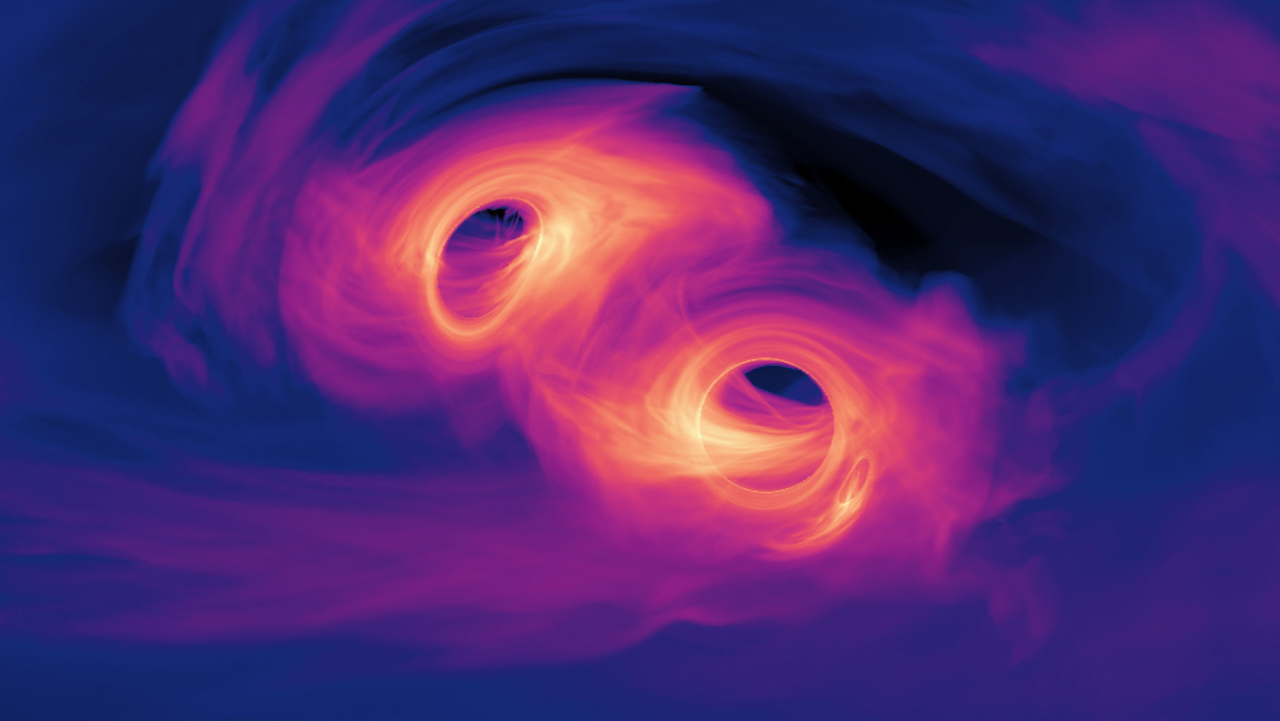Primordial black holes are thought to have formed early in the evolution of the universe. None have been discovered yet but if they do exist and they may be plentiful, drifting almost invisibly through the cosmos, then they might account for dark matter. One possible way to search for them is to see the results of their meals and a bizarre new theory suggests low mass black holes could be captured by neutron stars and become trapped inside, devouring them from within. If these strange objects existed then it would make neutron stars less common in locations where black holes would proliferate as observed around Galactic centre.
Continue reading “How a Black Hole Could Eat a Neutron Star from the Inside Out”Finally! Astronomers Find the Missing Link Between Stellar and Supermassive Black Holes

While black holes are known as the most destructive objects in the universe, their evolution is largely shrouded in mystery. This is because while astronomers are familiar with supermassive black holes that exist at the center of galaxies like our own and black holes whose masses are less than 100 times the size of our Sun, the notion of intermediate-mass black holes (IMBHs) have largely eluded discovery. However, this might change with the recent discovery of a black hole candidate that could exist within the globular cluster, Omega Centauri, and holds the potential to be the “missing link” in scientists better understanding black hole evolution.
Continue reading “Finally! Astronomers Find the Missing Link Between Stellar and Supermassive Black Holes”A Solution to the “Final Parsec Problem?”

Supermassive Black Holes are Nature’s confounding behemoths. It’s difficult for Earth-bound minds to comprehend their magnitude and power. Astrophysicists have spent decades studying them, and they’ve made progress. But one problem still baffles even them: the Final Parsec Problem.
New research might have solved the problem, and dark matter plays a role in the solution.
Continue reading “A Solution to the “Final Parsec Problem?””Next Generation Event Horizon Telescope To Unlock Mysteries of Black Holes

The prospect of actually resolving the event horizon of black holes feels like the stuff of science fiction yet it is a reality. Already the Event Horizon Telescope (EHT) has resolved the horizon of the black holes at the centre of the Milky Way and M87. A team of astronomers are now looking to the next generation of the EHT which will work at multiple frequencies with more telescopes than EHT. A new paper suggests it may even be possible to capture the ring where light goes into orbit around the black hole at the centre of the Milky Way.
Continue reading “Next Generation Event Horizon Telescope To Unlock Mysteries of Black Holes”Black Holes Dominate Large Regions of Space, But They’re Mysterious

In the beginning, the Universe was all primordial gas. Somehow, some of it was swept up into supermassive black holes (SMBHs), the gargantuan singularities that reside at the heart of galaxies. The details of how that happened and how SMBHs accumulate mass are some of astrophysics’ biggest questions.
Continue reading “Black Holes Dominate Large Regions of Space, But They’re Mysterious”What’s Next for the Event Horizon Telescope? Twelve Possible New Targets
Both the Milky Way and a galaxy known as M87 have supermassive black holes at their core. These are the two largest black holes we know about and the Event Horizon Telescope has just captured stunning images of their event horizons. A new paper looks at what we might expect from a next generation EHT and highlights twelve targets that should be top of the list.
Continue reading “What’s Next for the Event Horizon Telescope? Twelve Possible New Targets”Galaxies Filled With Old Stars Seen Shortly After the Big Bang

How can young galaxies in the early Universe have ancient stars? That’s the question a team of astronomers set out to answer using JWST as a probe. They first spotted the massive objects in 2022 and are still working to explain what these things are.
Continue reading “Galaxies Filled With Old Stars Seen Shortly After the Big Bang”Earliest Supermassive Black Holes Were “Shockingly Normal”

The early Universe is a puzzling and—in many ways—still-unknown place. The first billion years of cosmic history saw the explosive creation of stars and the growth of the first galaxies. It’s also a time when the earliest known black holes appeared to grow very massive quickly. Astronomers want to know how they grew and why they feed more like “normal” recent supermassive black holes (SMBH).
Continue reading “Earliest Supermassive Black Holes Were “Shockingly Normal””Black Hole Bullies Shut Down Star Formation in Their Galaxies

A supermassive black hole in the heart of a galaxy is the ultimate 800-pound gorilla of astrophysics. Not only do the most active ones suck in material and hide it away, but their accretion disks also blast strong quasar winds out to space. Those winds push things around, and in the process, they sometimes shut down star formation.
Continue reading “Black Hole Bullies Shut Down Star Formation in Their Galaxies”Another Strike Against Primordial Black Holes as an Explanation for Dark Matter

The quest to understand dark matter has taken many twists and turns. It’s a scientific tale but also a human one. We know there’s a missing mass problem, but astrophysicists and cosmologists can’t figure out what the missing matter is. One of the most interesting potential solutions is primordial black holes (PBHs).
However, new research suggests that PBHs can only make up a small portion of dark matter if any at all.
Continue reading “Another Strike Against Primordial Black Holes as an Explanation for Dark Matter”

